The Period of the Establishment of the Ottoman Rule

Athos was facing problems due to the raids of Ottoman pirates since ancient times. However, until the 13th century, the presence of the latter in the Athonite peninsula was limited. By the 14th century, the routes connecting Athos with the surrounding areas were now known to the Ottoman mercenaries of the Byzantine army. As a result, the raids began to increase. The Catalan troops, who had been called up by the Byzantine state to fight the Ottomans, often allied with them, plundering the villages of the peninsula, as well as the monasteries of Mount Athos.
In 1325, many monks were forced to leave the Athos peninsula because of the incessant piracy. Gregory Sinaitis and Gregory Palamas, together with their disciples, left Mount Athos and settled in Thessaloniki. In 1340, with the advance of a second wave of pirate raids, Hosios Athanasios (1302 - 1380) has also left Mount Athos.
In 1383 the Ottomans occupied the Greek city of Serres. At the same time, the Athos peninsula surrendered to the conquerors. Over the next forty years, political instability prevailed, as the leadership of the Byzantine state was constantly changing. In 1423 Andronikos Palaiologos was forced, after a long siege, to surrender the city of Thessaloniki to the Venetians, while he himself went to Mount Athos, became a monk and died under the name of Akakios. With the fall of Constantinople in 1453, the Ottoman power was consolidated throughout the entire territory of the Byzantine Empire.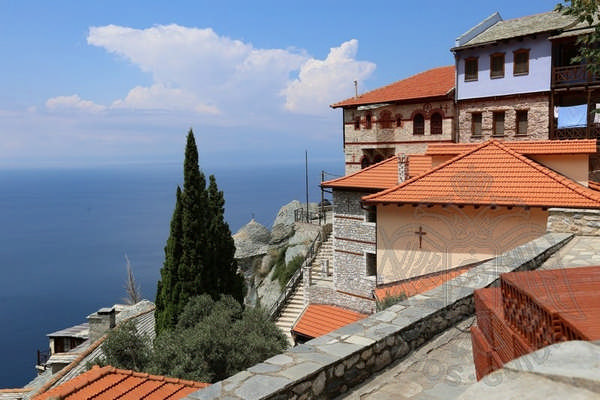
Mount Athos During the Ottoman Rule
Mount Athos was subjugated to the conquerors in 1424. Many changes were immediately made regarding the administration of the peninsula. As early as 1428, a document signed by the Patriarch arrived in Athos, stipulating the unification of the monasteries of Alypios and Koutloumousiou.
It is worth noting that the Ottomans did not send an army to Mount Athos and did not establish any administration there, as the Athonite monks, given their spiritual way of life, were a peaceful group of people and were not considered a threat to the new power. Moreover, they faithfully followed the new laws and regulations imposed on them. This is probably the reason why the Athonite community survived without suffering serious setbacks, as happened in other regions.
The example of Mount Athos demonstrated the tax-collecting nature of the Ottoman state and the Sultan's desire to concentrate all local wealth. Athos was considered an inexhaustible source of income, from which all kinds of material benefits were derived by legal or illegal means.
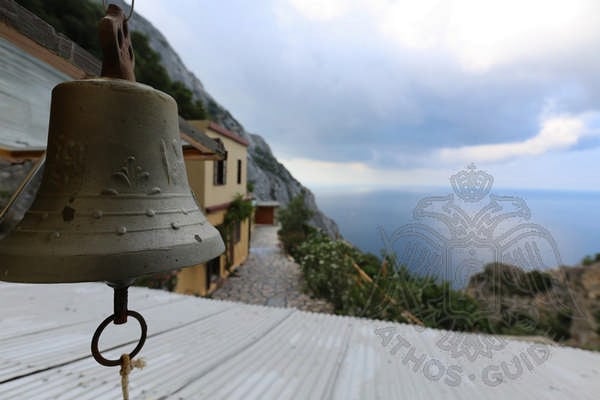 Moreover, one of the greatest proofs of obedience to the Sultan was the timely payment of taxes. The restriction of the economic and social activities of the local population was ensured both by the Ottomans' collection tactics and by the repulsion and settlement of the inhabitants in the most remote, disadvantaged areas. However, the religious life of the population was of little interest to the Ottoman state. Despite of the efforts to Islamize the Greeks, the reverse process, i.e. conversion to Christianity, was considered to be a much more serious issue and, therefore, was punishable by death.
Moreover, one of the greatest proofs of obedience to the Sultan was the timely payment of taxes. The restriction of the economic and social activities of the local population was ensured both by the Ottomans' collection tactics and by the repulsion and settlement of the inhabitants in the most remote, disadvantaged areas. However, the religious life of the population was of little interest to the Ottoman state. Despite of the efforts to Islamize the Greeks, the reverse process, i.e. conversion to Christianity, was considered to be a much more serious issue and, therefore, was punishable by death.
Christianity was not officially forbidden. However, bell ringing was expressly forbidden, as was the building of new churches. Even the most imposing and magnificent temples were confiscated and converted into mosques. The restoration and maintenance of the oldest churches was only allowed with special permission from the Sultan, which required the payment of a large sum of money and was not easily granted.
With the incorporation of the new territories of the Ottoman Empire, Athos came under the administration of Ierissos, the former capital of the local Byzantine province. The Ottoman army established itself in the city's fortress, from where it monitored the movements of the monastic community and controlled the observance of the laws. Until the 18th century, the Ottomans were not particularly interested in the Athonite state. However, when the Athonite monasteries began to regain their strength, things changed. Three representatives of the local Ottoman authorities were transferred and settled inside the Athonite territory.
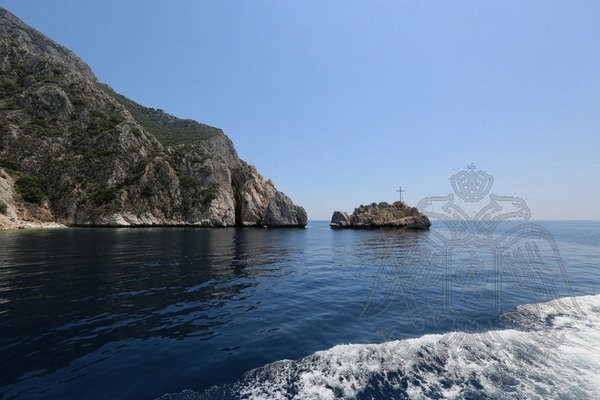 In 1525, when the Sultan organized the army of the Janissary in Constantinople, he offered the area of Mount Athos to his soldiers as a gift. The holy community hoped that with this development they would have the protection of the Janissary, while the endless raids on the peninsula would gradually stop. In addition, the monks would be able to communicate directly with Constantinople. Addressing the army commander, the Athonites could take their requests to the Sultan himself, accompanied by rich gifts and offerings.
In 1525, when the Sultan organized the army of the Janissary in Constantinople, he offered the area of Mount Athos to his soldiers as a gift. The holy community hoped that with this development they would have the protection of the Janissary, while the endless raids on the peninsula would gradually stop. In addition, the monks would be able to communicate directly with Constantinople. Addressing the army commander, the Athonites could take their requests to the Sultan himself, accompanied by rich gifts and offerings.
The commander of Mount Athos, the Agha, was initially based in Thessaloniki, and later moved to Karyes. The presence of an irreligious Ottoman governor within the Athonite community was, of course, not pleasant to the monks. In the archives of the Holy Monastery of Saint Paul there is a relevant document from 1575 that mentions: "An Ottoman Agha, together with 40 armed men, resides on Mount Athos and executes a large number of Athonite monks".
Indeed, the Agha usually cooperated with pirates and other bandits in order to secure a share of the spoils. In addition to his annual salary, the monasteries and sketes had to invite him to the great festivals and offer him rich gifts. The Agha left the monasteries with sacks full of coins. Every move of the monks was accompanied by a corresponding monetary contribution to him. In 1769, the Athonite fathers tried to limit his power by writing a letter listing all the cases of abuse of his authority.
Taxation During the Ottoman Period
 Праздник Пантелеймона.jpg) All the lands conquered by the Ottomans belonged exclusively to the Sultan. The latter could concede them to private individuals. However, after their death, the right to use and exploit the land was disputed. It was necessary to draw up a new document, validating the rights of the new owner. According to the administration of the Ottoman Empire, these plots of land could also be purchased. The lands of Mount Athos, which were expropriated by the Ottoman conquerors, had the same fate. Among other things, one of the most difficult conditions that the monks had to face was the obligation to pay numerous and high taxes.
All the lands conquered by the Ottomans belonged exclusively to the Sultan. The latter could concede them to private individuals. However, after their death, the right to use and exploit the land was disputed. It was necessary to draw up a new document, validating the rights of the new owner. According to the administration of the Ottoman Empire, these plots of land could also be purchased. The lands of Mount Athos, which were expropriated by the Ottoman conquerors, had the same fate. Among other things, one of the most difficult conditions that the monks had to face was the obligation to pay numerous and high taxes.
The difficult task of collecting the taxes was entrusted to the Holy Monastery of Great Lavra. In charge of the process was the former patron of Mount Athos and later chief supervisor. Together with the parliament, he determined the tax obligations of the monasteries and collected the corresponding amounts.
The Pirates of the Mediterranean
As was the case in other parts of the Mediterranean, piracy affected Mount Athos. Ottomans, Venetians, Spanish and, from the 18th century onwards, Greek pirates engaged in fierce raids against the monasteries.
In 1533 the Esphigmenou Monastery suffered severe hardships. A record of the time describes the damage to the monastery, the looting of the library and the arrest of nine monks. This was not, of course, an isolated incident. The Ottoman authorities made little effort to protect the holy lands. As a result, the monks were forced to organize the defense of the site themselves, fortify the walls and look after the towers. The lack of population and the captivity of many of the monks made it easier for the pirates.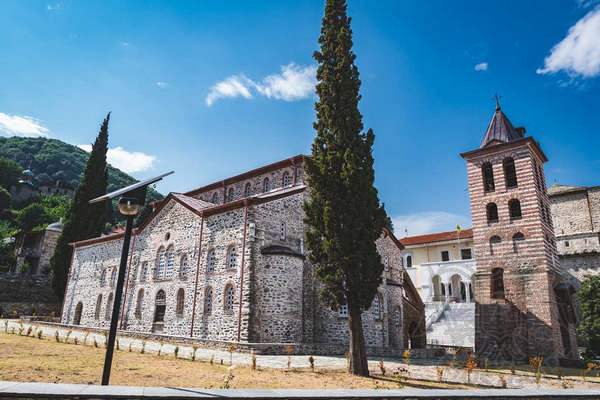
The 16th century brought the beginning of the intensive construction of defensive structures. The monastery towers were equipped with weapons. The era was forever imprinted in the history of Mount Athos. Many icons still bear traces of the pirates' swords to this day. Furthermore, numerous frescoes depict scenes from the battles between the monks and the invaders.
However, although piracy was a serious issue, the financial exhaustion of the monasteries was primarily due to the tax demands of the Ottoman Empire. Pirates often left with little loot, since the monasteries were already impoverished by what they paid to the Ottomans.
The Confrontation with the Ottomans
The Help of the Patriarchs
During the difficult times of Ottoman rule, the concern of the Ecumenical Patriarch was Athos' strongest strength. There was no longer the figure of the Byzantine emperor to strengthen the monasteries, and the Sultan sitting on the throne of the new state was not interested in monasticism. The patriarchate was the only hope of the Athonite people. However, being the center of orthodoxy, the patriarchate often attracted the attention of the conquerors, experiencing their violence and imposition. Athos was like an unquenchable fire, the light of Christianity that had to be preserved and sustain the faith of people.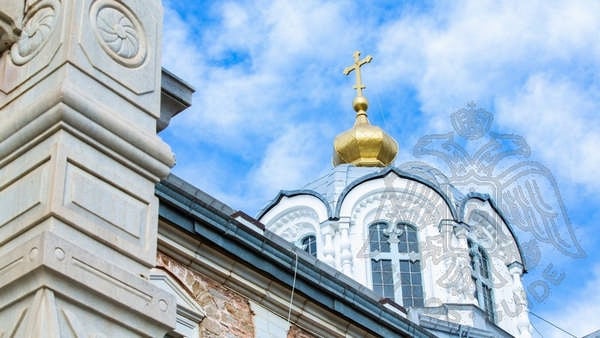
The Contribution of the Great Rulers
Since there was no ruler within the Ottoman territory who cared for the Athonite monasticism, the monarchs of the north assumed the role of protector and helper. Serbia, Iberia, Wallachia, Moldavia and Russia generously offered their support. From the 17th century onwards, the monasteries began to acquire metochia outside Greece. This property provided them with significant income that dynamically supported the survival and development of the monasteries.
The Devotion of the Orthodox People
The meeting of the enslaved Christians with the Athonite monks was a very important event for the lives of people who were tormented by the Ottoman rule. Thus, the monks decided to set out on a journey to the towns and villages of the Orthodox Christians.
Collecting donations was not the only purpose of this mission. They sought, first and foremost, to maintain contact between the common people and the Athonite state, as making a pilgrimage was quite difficult for the people of that time.
Donations supported Athos for a long time. The humble contribution of the faithful strengthened the monasteries in difficult situations, when they had to pay extraordinary taxes or a certain amount of money to free a monk that was kept as a hostage.
The Prosperity and the Decline of the Monasteries of Mount Athos
The period after the invasion and conquest of Greece by the Ottomans was a period of great decline. An improvement was observed only during the reign of Suleiman I the Magnificent. Furthermore, the support of the rulers of the dunabian principalities played an important role in improving the general situation of the enslaved monasteries. Despite the fact that the construction of new infrastructure and churches was forbidden in Mount Athos, on the pretext of restoring existing old buildings, as well as through generous bribes to Ottoman officials, the Athonites managed to create new buildings, which to this day constitute astonishing examples of post-Byzantine architecture.
This period lasted for about 80 years, until in 1580 a new, much more intense period of decline started. The problems were due to the lack of population in the monasteries.
The same situation continued until 1661, when the Holy Monastery of Great Lavra was dissolved. In the following decades, the care of the patriarchs, as well as the other high-ranking clergy, led to a prosperity that lasted until the revolution of the Greeks against the Ottomans. Even the terrible earthquake of 1765 could not prevent the revival of the holy community.
The Population of Mount Athos
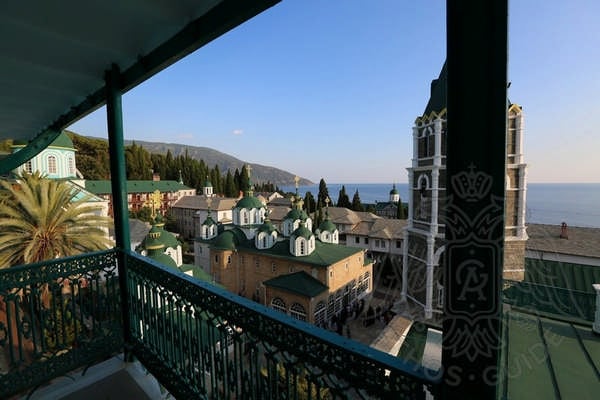 The decline of the population of Mount Athos, as well as the poverty that struck Athos after the Ottoman imposition, was inevitable. At its peak, during the 11th century, there were up to 6,000 monks. During the period of the Ottoman rule, the exact number of the population of the monastic community remains undefined. The relevant documents or records that have survived are scarce. However, the tax paid by each individual monk to the Ottomans allows us to make certain assumptions. In 1387 the inhabitants of Athos must have numbered close to 3,000. Of course, in difficult times this number was greatly reduced, while the tax remained unchanged. The fact that the amount paid did not increase, indicates that the population of Athos never exceeded the 3,000 inhabitants. The census of 1808 recorded 2,395 monks.
The decline of the population of Mount Athos, as well as the poverty that struck Athos after the Ottoman imposition, was inevitable. At its peak, during the 11th century, there were up to 6,000 monks. During the period of the Ottoman rule, the exact number of the population of the monastic community remains undefined. The relevant documents or records that have survived are scarce. However, the tax paid by each individual monk to the Ottomans allows us to make certain assumptions. In 1387 the inhabitants of Athos must have numbered close to 3,000. Of course, in difficult times this number was greatly reduced, while the tax remained unchanged. The fact that the amount paid did not increase, indicates that the population of Athos never exceeded the 3,000 inhabitants. The census of 1808 recorded 2,395 monks.
The Number of Monasteries in Mount Athos
With the development of monasticism in Mount Athos, large monasteries began to emerge, uniting smaller monasteries, cells, and hermitages, which were turned into sketes. In 1393, 25 large monasteries were recorded, the last survivors of what had once been an impressive number. Some of these disappeared, were abandoned, or merged with other monasteries. A few decades later, only 20 remained active.
Mount Athos' Participation in the Greek war of Independence
Despite the difficulties, by the 19th century Mount Athos had settled its debts. Its lost land was recovered and even increased through donations. A printing press operated in Athos, and the theological education of the monks led to the production of rich theoretical works. Unfortunately, by the end of 1821, many of these achievements had already been lost.
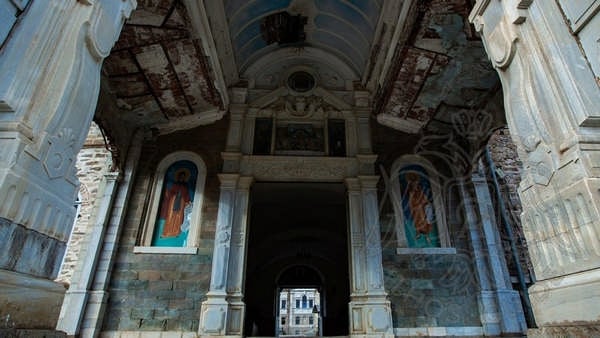 Mount Athos had always been closely connected to the lives of all Orthodox Christians. It shared the suffering of the oppressed masses and often served as a refuge for those being persecuted. The absence of Ottoman military presence on the Athonite peninsula led many groups of Greek revolutionaries to seek shelter there.
Mount Athos had always been closely connected to the lives of all Orthodox Christians. It shared the suffering of the oppressed masses and often served as a refuge for those being persecuted. The absence of Ottoman military presence on the Athonite peninsula led many groups of Greek revolutionaries to seek shelter there.
By November 1821, the monks began to abandon Mount Athos in order to escape the enraged Ottomans, while also trying to save whatever precious items the Athonite monasteries possessed. After the end of the battles, a committee was formed to gather and catalog the holy relics of Mount Athos in order to return them safely to their places.
By 1824, the population of Athos had dwindled to no more than 500 monks.
The Ottomans permanently left Mount Athos on April 13, 1830. Since then, this day has been commemorated by the monks as the day of liberation of Athos.

